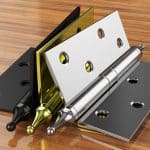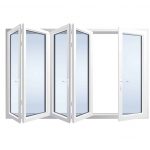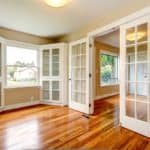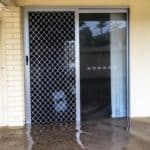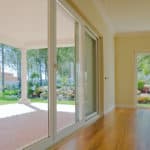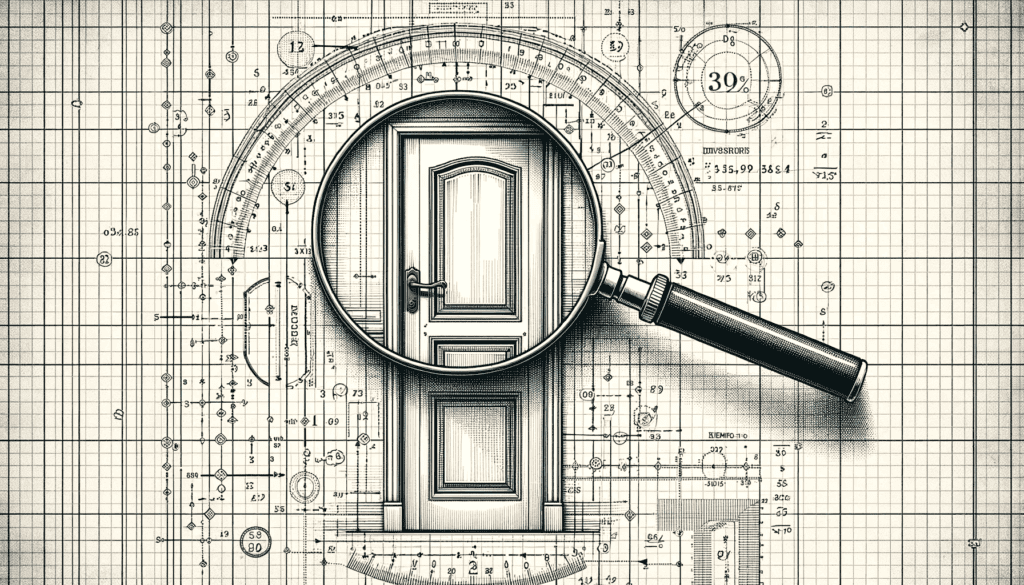
French doors are a classic and elegant architectural feature that can enhance a home’s style and functionality. But before installing them, it’s important to understand if there is a standard French door size or if you’ll need custom-sized doors for your particular space. This comprehensive guide covers everything you need about standard and custom French door sizes.
What Are French Doors?
French doors, sometimes called French windows, are pairs with glass panes extending their entire length. The doors are hinged on either side, so they open outward. This allows them to provide an airy, open feel and easy access between rooms or outdoor spaces.
French doors have a timeless elegance and style that works well in many homes. The glass panes allow natural light to flow between rooms. Opening the doors wide creates an indoor/outdoor living space. French doors can be used as interior or exterior doors. Common locations include:
- Patio or deck doors
- Entry doors
- Between the living room and dining room
- Between kitchen and family room
- Master bedroom doors opening to balcony
Are There Standard French Door Sizes?
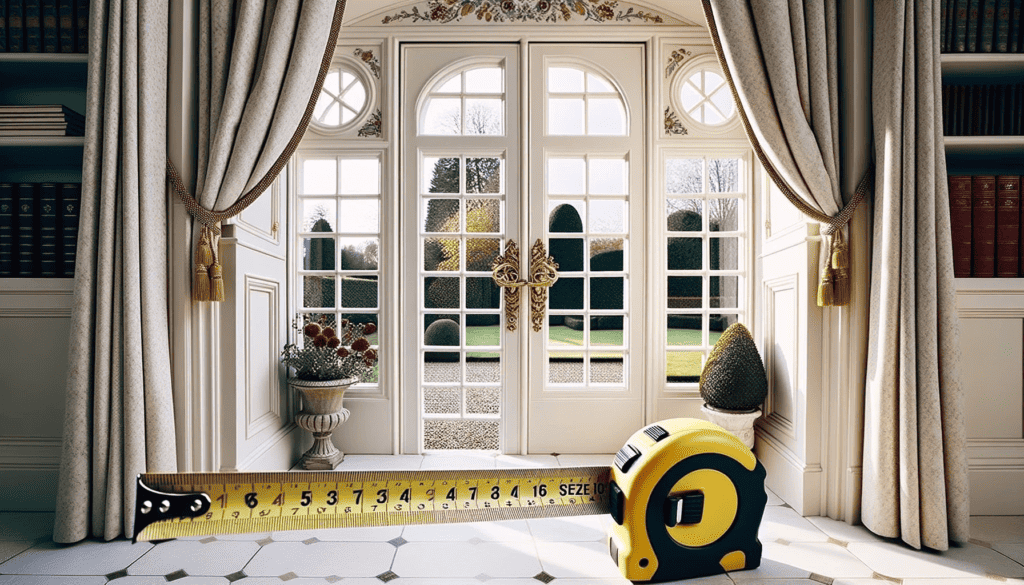
French door sizes are generally standard to make manufacturing easier and to fit common rough opening sizes. Standard sizes range from very small to extra wide to accommodate different needs:
Standard Exterior French Door Sizes:
- 30″ x 80″
- 32″ x 80″
- 34″ x 80″
- 36″ x 80″
- 48″ x 80″
- 60″ x 80″
Standard Interior French Door Sizes:
- 24″ x 80″
- 28″ x 80″
- 30″ x 80″
- 32″ x 80″
- 36″ x 80″
The most common standard French door size is 36″ x 80″. But many manufacturers offer additional standard widths like 34″, 42″, 48″, 54″, 60″, 66″, and 72″.
The standard height for most French doors is 80″, but 84″ and 96″ heights are also reasonably standard.
So, in summary, while 36″ wide x 80″ high is considered the most common standard French door size, there are many standard sizes to choose from, ranging from 24″ to 72″ wide and 80″ to 96″ high.
Benefits of Standard Size French Doors
Choosing standard-size French doors offers several benefits:
- More Affordable – Standard sizes benefit from economies of scale. Since manufacturers produce high volumes of the most popular standard sizes, they can offer them at lower prices.
- Readily Available – Standard sizes are usually in stock and ready to ship. This avoids the lead time of custom orders.
- Easier Installation – Doors cut to standard sizes ensure an easier installation. No additional modifications are needed, so the doors fit into an adequately framed rough opening.
- Variety – Even though you’re choosing a standard size, you’ll have many styles and designs to select from. Glass panel configuration, hardware finishes, wood types, and more can be customized.
When Custom Sizes Are Needed
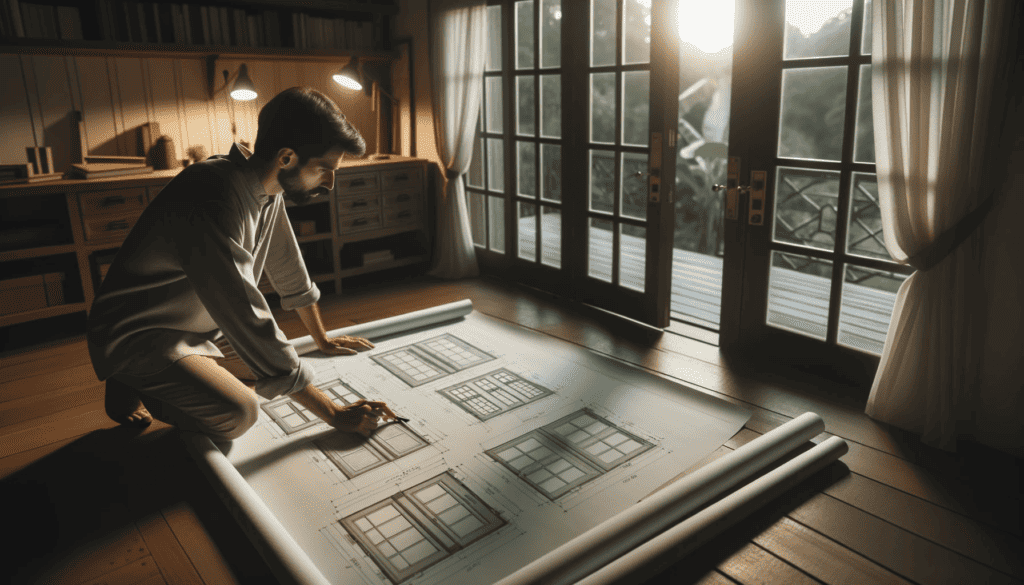
While standard French door sizes work for many homes, in some situations, custom sizing is required:
Unusual Opening Size – Custom sizing will be required if your rough opening dimensions don’t match any standard sizes. An unusual width or height requires a door specifically manufactured to fit correctly.
Matching Existing Doors – When replacing French doors, you may need a custom size to match the original doors and fill the existing frame. Even if the old doors were an odd size, new ones can be made to fit.
Design Preference – Some homeowners opt for custom sizes simply for design reasons. For example, an extra wide door can make a stunning statement and provide unobstructed views. Or narrower doors can meet tight space limitations.
Handicap Accessibility – Wider doors may be needed to meet ADA requirements for wheelchair clearance. In this case, a custom size would be required.
So, in summary, unique home circumstances, matching existing openings, meeting accessibility standards, and personal design preferences are common reasons for needing custom-sized French doors.
How to Measure for Custom French Doors

If you’ve determined a custom size is needed, the next step is to measure the rough opening accurately. Follow these steps:
- Measure width – Take three measurements at the opening’s top, middle, and bottom. Use the smallest measurement.
- Measure height – Take three measurements at the left, middle, and right sides. Use the smallest measurement.
- Use the Smallest Measurements – This ensures your custom doors will fit the opening properly.
- Add for Clearance – Increase width and height by 3/4″ – 1″. This provides the proper amount of clearance.
- Double Check – Take time and care when measuring to avoid costly mistakes. Have a helper confirm measurements, too.
- Consider Trimming – Most doors can be trimmed 1/2″ on each side if the opening is slightly smaller.
This careful measuring process will produce custom French doors that fit your opening perfectly.
Considerations When Selecting French Door Sizes
Here are some other important considerations as you select the size of your French doors:
- Swing clearance – Ensure adequate room for the doors to fully swing open without hitting walls, rails, or other objects.
- Furniture clearance – Ensure room for furnishings, traffic flow, and safe use of the space once doors are open.
- Matching other doors – Consider sizing doors to match the height or width of other doors in the home for a cohesive look.
- Meeting egress codes – Ensure your region’s door size meets fire safety and emergency egress width requirements.
- Energy efficiency – Larger glass areas can lead to heat loss/gain. Balance desired views and light with energy efficiency needs.
- Price – Larger custom doors usually come with a higher price tag. Factor this into your budget.
Carefully considering size in aesthetics and functionality will ensure your French doors work beautifully in your home.
Typical French Door Materials
French doors are commonly constructed from these materials:
- Wood – Made from oak, mahogany, pine and various other woods. Provides a traditional, classic look. Requires regular maintenance.
- Fiberglass – Very durable and low maintenance. It is more dent and fade-resistant than wood. Provides good insulation.
- Vinyl – Affordable PVC doors that are highly weather resistant. It offers good insulation and requires hardly any maintenance.
- Aluminium – Lightweight but very sturdy. Resists rusting and corrosion. Suitable for coastal areas. Requires minimal maintenance.
- Steel – Extremely strong and secure metal doors. It can insulate well when adequately constructed. It can rust over time if the quality isn’t high.
There are pros and cons to each material. Selecting wood, fibreglass, vinyl, aluminium, or steel French doors depends on budget, durability needs, insulation goals, and visual appeal.
Interior vs. Exterior French Doors
French doors can be installed in both interior and exterior applications. This affects the door features and materials choices:
Interior French Doors
- Typically constructed with wood, glass, or fibreglass
- Offer a wider variety of decorative glass designs
- More comprehensive style selections like arched doors
- There is less need for extreme durability and high insulation
Exterior French Doors
- Usually made from wood, fibreglass, vinyl, aluminium or steel
- Glass is often tempered for safety
- Much better insulation ratings are needed
- Must withstand weather elements
- Locks and hardware must be very secure
So interior French doors emphasize decorative styles and aesthetics, while exterior doors focus more on high performance, durability, security and energy efficiency.
Glass Options for French Doors
The glass incorporated into French doors is an important design element. Here are some common glass types and styles:
- Clear glass – Provides undistorted views and maximum light.
- Low-E glass – Coated with a microscopically thin metallic layer to reduce solar heat gain. More energy efficient.
- Tinted glass – Dark tints like grey or bronze help reduce glare and solar heat gain. Provides extra privacy.
- Textured glass – Etched or frosted glass options diffuse light. Offer privacy while allowing light through.
- Obscure glass – Heavily textured glass provides privacy while somewhat obstructing views and light transmission.
- Decorative glass – Available in patterns like rain, reed, and jewel textures. Provides privacy in stylish ways.
- Multi-pane glass – Small individual panes create a classic divided light look. Wide variety of grid patterns.
Choosing the right glass type involves balancing transparency, privacy, insulation, light diffusion, and aesthetic appeal.
French Door Handles and Hardware
Don’t overlook the importance of hardware selection for French doors. Pay attention to:
- Handle sets – Match finishes on handles/knobs to other hardware and interior décor. Brass, satin, nickel, and black are popular.
- Hinges – Go for ball-bearing hinges for smooth operation. The finish should match the handles. Hinge style impacts door clearance.
- Locks and latches – Keyed, thumb-turn and multipoint locks provide optimal security. Match finish to other hardware.
- Weatherstripping – Compression weatherstripping is essential for exterior doors. Bulb seal strip for the bottom.
- Door sweeps – Needed along bottom edges to seal the gap between doors and threshold. Prevents air infiltration and pests.
Choosing compatible and durable hardware ensures French doors function correctly and provide security.
How Much Do French Doors Cost?
The cost of French doors depends on several factors:
- French door size – Larger custom doors cost more. Standard sizes are the most economical.
- Materials – Fiberglass and vinyl doors are moderately priced. Wood doors range widely. Steel is low-cost but has tradeoffs.
- Glass types/patterns – More intricate glass designs and divided light grids increase costs.
- Hardware upgrades – Premium handles, hinges, and locks raise the budget.
- Prep and installation – Approximately 50% or more of the total budget.
For professional installation of quality wood French doors, expect to pay $2,500 to $10,000+. Vinyl or fibreglass doors will range from $1,500 to $5,000 installed. Get several estimates before selecting a supplier and installer.
Installing French Doors: DIY vs Professional?

Installing French doors is one of the more complex DIY projects for homeowners. Key installation steps include:
- Removing old doors and preparing the rough opening
- Framing out rough opening and applying weather-resistive barrier
- Flashing rough opening properly
- Securing the door correctly in opening and applying exterior trim and sealant
- Hanging doors, installing hardware, and ensuring proper operation
- Sealing and weatherstripping exterior doors thoroughly
While an experienced DIYer can potentially install their own French doors, most homeowners utilize professional installation services to ensure it’s done right due to the complexity. The cost is higher, but you benefit from an experienced installer who can complete the tricky details appropriately. They also provide a warranty.
If installing them yourself, follow the manufacturer’s installation instructions closely. Or consider hiring a contractor just for preparation work and letting them handle the trickiest parts of the installation.
What Determines the Standard Size of French Doors?
The maximum exterior French door widths can vary based on a few factors. One key determinant is the standard size of doorways in homes, as French doors should comfortably fit within these openings. Another consideration is the overall design and layout of the space, ensuring the doors complement the area.
FAQs About French Door Sizes
Some additional common questions about French door sizes include:
Are French doors standard bathroom sizes?
No. Standard bathroom door sizes are 24″, 28″, and 30″ wide. French doors won’t fit standard bathroom layouts without significant modifications.
What are standard exterior French door widths?
As outlined above, joint standard exterior French door widths are 30″, 32″, 34″, 36″, 48″, and 60″, with 36″ being the most popular.
How wide is a wheelchair-accessible French door?
ADA guidelines require at least 32″ of clear width for wheelchair access. So, a 36″ French door is typically used to meet accessibility standards.
What is the standard width of a French door with sidelights?
Sidelights add about 14″-18″ of width per side. So, a 36″ French door with two 18″ sidelights would have a total width of around 72″.
How wide do French doors need to be for egress requirements?
Most building codes require 32″ to 36″ of clear width to meet emergency egress requirements. Standard 36″ x 80″ French doors meet this in most cases.
Can you make French doors shorter?
Yes. Most doors can be trimmed by 1/2″ – 3/4″ along the bottom without compromising their integrity if the opening ends slightly shorter than expected.
What is the standard French door frame size?
The most common interior door jamb width is 4-9/16″. For exterior, 5-9/16″ to 6-9/16″ is standard. The frame must match the door thickness.
Knowing the basics of standard and custom French door sizes takes the guesswork out of selecting the perfect doors for your home. Carefully think through size considerations along with material and style choices. With the right French doors, you can enhance your living space for years.

Hi, I’m George Anderson, an expert installer with an extensive door installation and maintenance background. I’m passionate about sharing my knowledge on door equipment and accessories through my writing, helping homeowners make informed decisions. My specialty lies in custom door installations, with a commitment to enhancing the aesthetics of every home. Please feel free to reach out anytime for help with door-related questions or needs.

